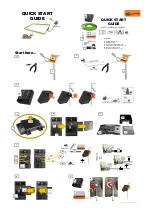
Installing and putting a TIM into operation
5.5 Installing a TIM
SINAUT ST7 Station control system - System Manual
212
System Manual, 05/2007, C79000-G8976-C178-06
3. Connect the TIM to the power supply. Since this is a separate TIM rack, this does not
need to be the power supply of the CPU with which the TIM is connected over MPI or
Ethernet.
4. In the case of a TIM with an integrated modem, insert the cable supplied with the TIM for
the internal modem into the X3 RJ-12 jack. This is located above the power supply
connector of the TIM. The catch of the RJ-12 Western plug must be on the right hand
side when it is inserted.
On the TIM 4R, the X3 connector is an RJ-45 jack and provides access to the second
RS-232/RS-485 interface of this module. The adapter cable supplied with the TIM 4R is
inserted here.
5. If you are connecting the TIM to an external modem, the insert the 9-pin D-sub connector
of the modem connecting cable into the X1 connector of the TIM 4 or into the X1 or X2
connector of the TIM 4R-IE and screw it tight.
6. If a DCF77 radio clock is installed in the TIM, the BNC plug of the antenna cable must be
screwed to the BNC socket of the DCF77 adapter cable.
7. To install further TIMs in a rack, follow the same steps as described above. Observe the
following note.
Note
The bus module connector supplied with every TIM is not required. The TIMs are
interconnected over the MPI bus (TIM 4) or over Ethernet (TIM 4R-IE).
8. When all the TIMs have been installed, interconnect the TIMs and connect them to the
S7-CPU(s) or the PC of the control center. Connect a TIM 4R-IE over Ethernet and a
TIM 4 over a normal MPI connection. Remember that the terminating resistor in the MPI
connector of the MPI nodes at the beginning and end of the MPI bus must be activated.
9. Once the wiring is completed, the power supply can be turned on. The TIMs start up. The
LEDs on each TIM indicate the current start-up activities (see separate section
Start-up
activities
).
10. Once it has started up, the TIM can be supplied with its parameters (SDBs) using the
SINAUT Diagnostics and Service tool.
With the TIM 3V-IE variants and the TIM 4R-IE, the SDBs can also be loaded on the memory
card of the S7-300 CPU, with the TIM 4R-IE, you can also use the optional C-PLUG of this
module for storage. The TIM receives then its configuration data from the CPU during startup
or takes it from the inserted C-PLUG.
5.5.3
Horizontal and vertical installation
Horizontal and vertical installation
You can operate the SINAUT ST7 components both in horizontally and in vertically installed
racks.
















































